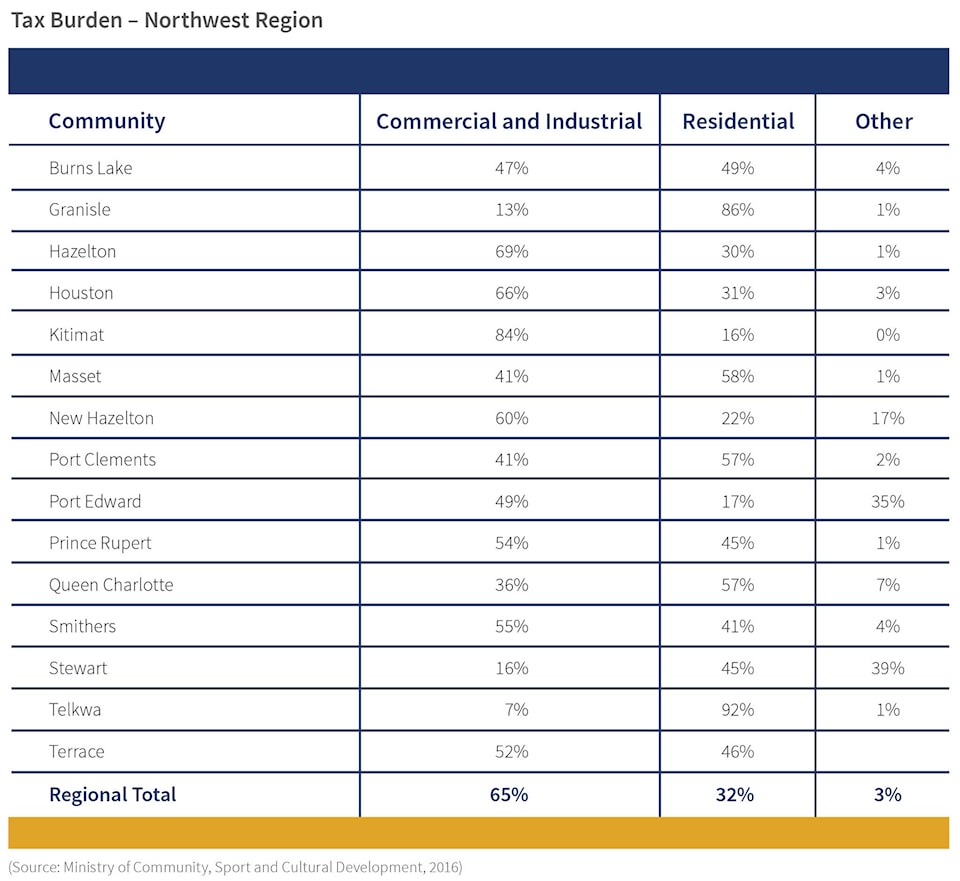The Northern Development Initiative Trust (NDIT) released their State of the North report on Jan. 9, providing a glimpse of northern B.C.’s economic outlook.
In the short-term, the report found that the regional economy remains uncertain. This uncertainty is due to mine closures, reductions in capacity at mills and projects that have been delayed or cancelled. Employment levels, however, are stable but the report expects slow employment growth for the Northwest region.
“The delay in a final investment decision for LNG projects in Kitimat and the cancellation in July 2017 of the Pacific Northwest LNG facility planned for Port Edward suggests that declines in construction employment in the region and slowing of employment growth in support sectors may be expected going forward,” the report states.
The report examines employment in the Northwest, which is related to forestry, mining, tourism and operations through the Port of Prince Rupert. While the decline or delay of the liquefied natural gas (LNG) industry on the coast may have brought a decline in construction employment, the report also found that construction has grown with the aluminum smelter expansion in Kitimat and site prep for potential LNG facilities.
In the Bulkley Valley, forestry success has not kept pace with mine closures from declining commodity prices. There is no mention in the report of new mines like Pretivm’s Brucejack or the potential of other mining properties like Seabridge’s KSM.
It also does not mention the latest developments of U.S. trade negotiations in the lumber industry.
“Declines in commodity prices have led to a number of mine closures, primarily in the Bulkley-Nechako region. While the demand for B.C. forest products has increased, it has not resulted in significant employment gains in the Northwest due to reductions in processing capacity and loss of timber supply as a result of the mountain pine beetle outbreak.”
READ MORE: Port delivers $1 billion injection into Northern B.C.
“The data is clear that the decline in commodity prices in 2014 had a significant impact on the regional economy. The good news is that the data also shows that economic conditions in the region have stabilized more recently, and major project activity across the region has created opportunities for new investment,” said Joel McKay, CEO of NDIT in the press release.
The Northwest region boasts more businesses that have more than 20 employees than the rest of the province. Most of these businesses are in mining, forestry, manufacturing, wood products and construction. Meanwhile, businesses in agriculture, fishing and hunting and retail have decreased.
Median wages in the Northwest are higher than the living wage of $18.17 for those working in the service sector, yet those working in accommodation, food service and retail are below the living wage. Registered nurses and psychiatric nurses are paid higher than other regions in northern B.C. with a median wage at $43.98.
READ MORE: Home value on the rise in Rupert
Housing prices have bounced around in communities across the Northwest. The report found that median prices for homes dropped 12.2 per cent in Prince Rupert from 2016 to 2017, while Smithers and area saw a jump to 13.7 per cent and Kitimat saw a 44.1 per cent drop.
Tax revenue in most of the Northwest is dependent on commercial and industrial properties. The report found that 55 per cent of the municipal tax revenue is from commercial and industrial properties in Smithers, 41 per cent from residential and four per cent from other areas. New Hazelton and Hazelton had even higher numbers for commercial and industrial taxes share at 60 and 69 per cent respectively.
Telkwa sticks out as a community that lacks much in the way of a commercial and industrial tax base, from which it draws only seven per cent. Residents shoulder 92 per cent of taxes.
The full report on the other northern regions can be read online.
With files from Brendan Kyle Jure.
